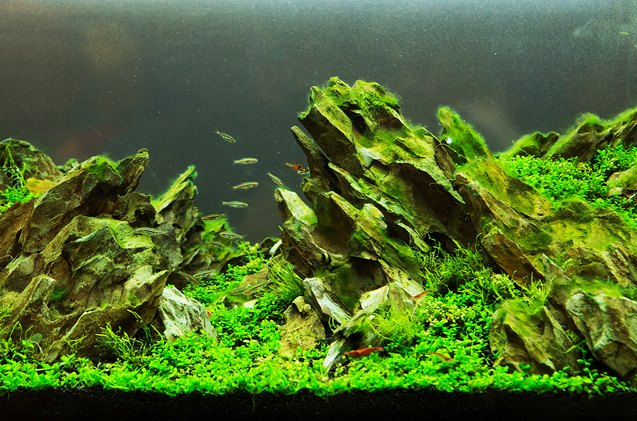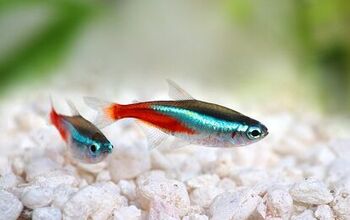Aquascaping: A Tank of Beauty


You want to get artistic in your aquarium; maybe you’ve seen the amazing aquascaping photos online, or perhaps you want something different to look at. I have a few simple pointers to make your aquarium the perfect conversation piece.
Rule of Thirds
Much like art, the rule of thirds comes into play. If you are unfamiliar with this concept, it’s simple. Look at your tank and split it mentally into three equal sections. The focal point should be on the far left, or the far right – never in the center. This concept is proven to be more aesthetically pleasing to the eye than if the focal point is centered.
Related: Paludariums Have Room For More Than Just Fish
Aqua Decor
Now it’s time to select what you would like to decorate your tank with. Everything from the substrate to the background is important, and should be considered in your process. At this point, feel free to sketch out a rough draft on paper, as it’s easier to process what you want outside the tank. Choose your décor according to your own preferences. Do you want the tank to be dark, or light, do you want a natural scene, or something more whimsical? Is the tank going to feature live plants, or fake plants, or no plants at all? Do you want rocks and wood, or skulls and ships? These are the things that are subjective, but will enable you to reflect your own tastes and personality in your tank.
Floor Model
After choosing everything you intend to place in the tank, I would suggest setting it up on the floor first. If you are using rocks, make sure they are stable and that they won’t fall into the glass if a fish digs under them, or bumps into them. Rearrange things, try whatever you would like.
Related: 6 Easy Hacks to Cure Fish Boredom
The Importance of Layers
If you have rocks or heavy items to go in the tank, place them directly onto the glass before adding substrate, so that the fish cannot knock them over. Build off of these stable pieces, and then add the substrate. Whether you are using sand, gravel, or pebbles, you can make areas higher or lower than others for your aquascape.
Fine Tuning
Once the largest items have been added to your tank, you can begin fine tuning your aquascape. If you are adding live or artificial plants, taller plants should be placed toward the back of the tank, and short, ground-level plants towards the front. Remember, if your plants are live, you have to leave room for growth. You can add plants into crevices in rocks and wood as well as directly into the substrate. Try to add a few different colors and shapes into your scape to diversify the view as well.
Tank Residents
After everything has been added into the tank, you are ready to add your inhabitants. Before stocking your fresh tank, or if you already had fish then this step should come first, consider the size of your fish. The scale of your tank should reflect your fish – if you have large structures, adding small schooling fish often gives a surreal look to the tank. Adding large fish to a tank with tiny structures is recreating a scene out of a Godzilla movie!
The most important thing in aquascaping is to have fun and to make the tank your own. You are the one who will be looking at it most often, and beauty is in the eye of the beholder.
Summer Davis is the mom of three kids, four dogs, and several tanks of fish. She boasts a passion for all animals, whether they are in the water or on land. This fish aficionado has kept many different species in her time, but holds a special place in her heart for wild and domestic bettas. When she’s not talking about fish, Summer “spins” her extra time as the director of a baton twirling organization.

Summer Davis is the mom of three kids, four dogs, and several tanks of fish. She boasts a passion for all animals, whether they are in the water or on land. This fish aficionado has kept many different species in her time, but holds a special place in her heart for wild and domestic bettas. When she's not talking about fish, Summer "spins" her extra time as the director of a baton twirling organization."
More by Summer Davis
























